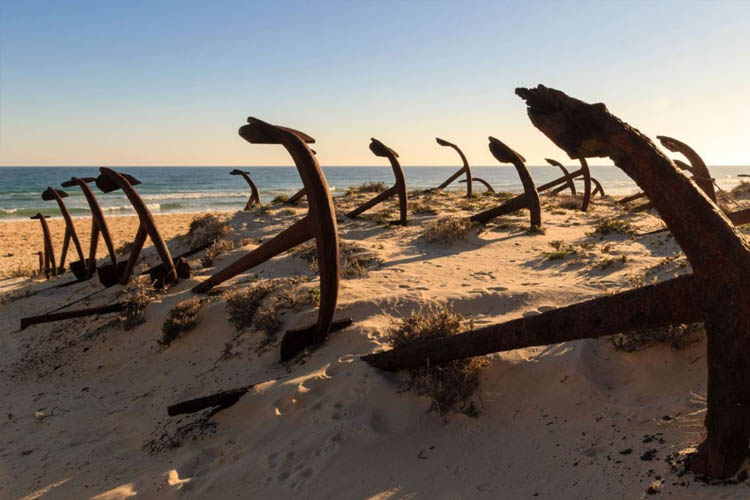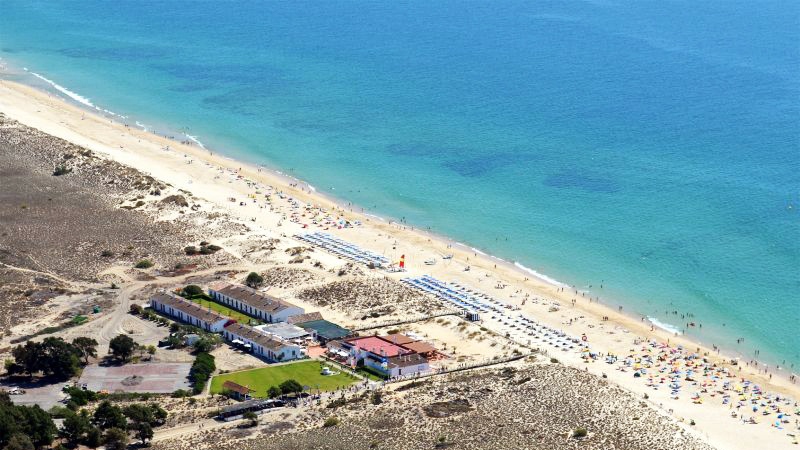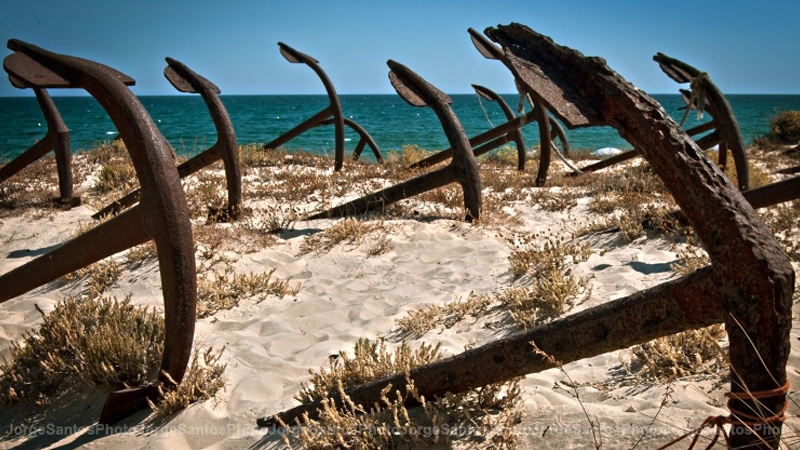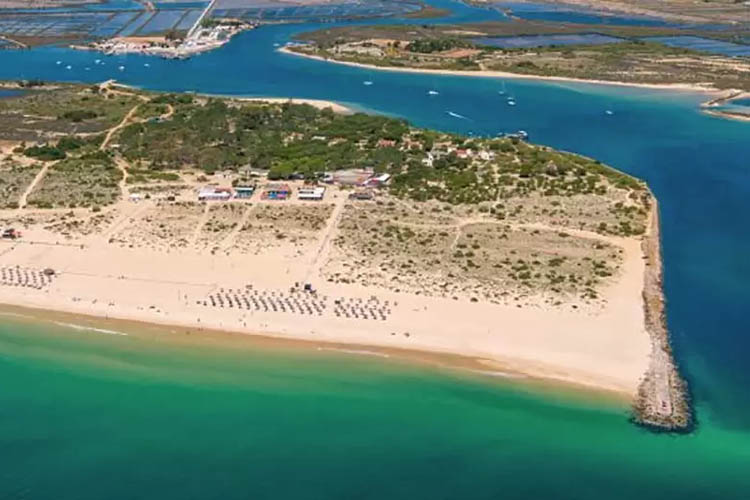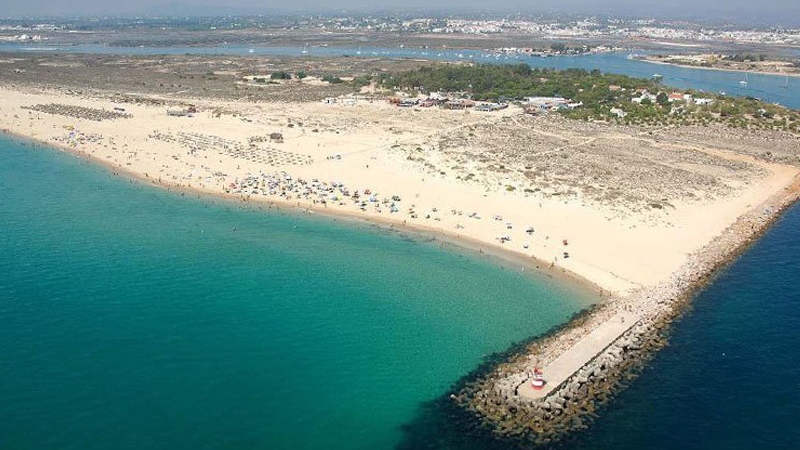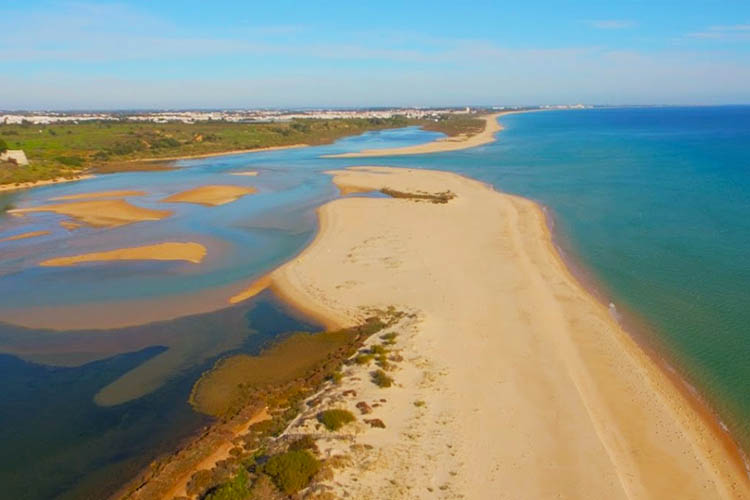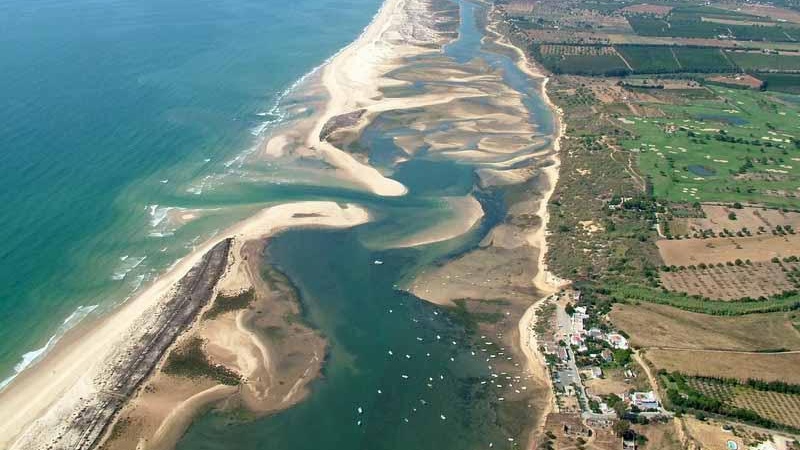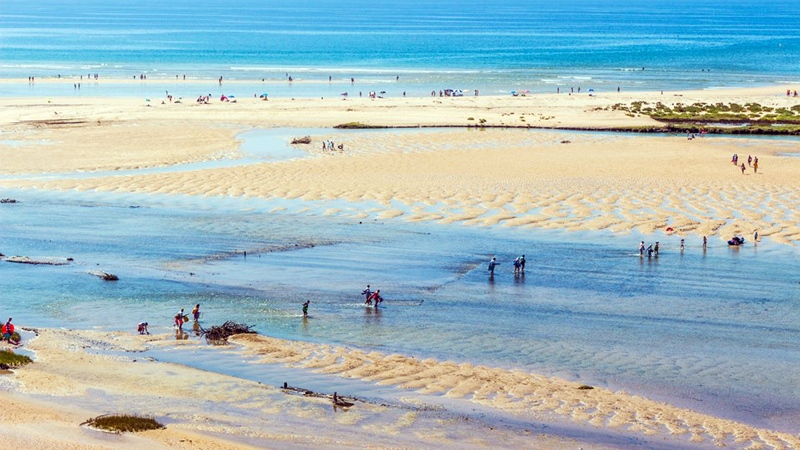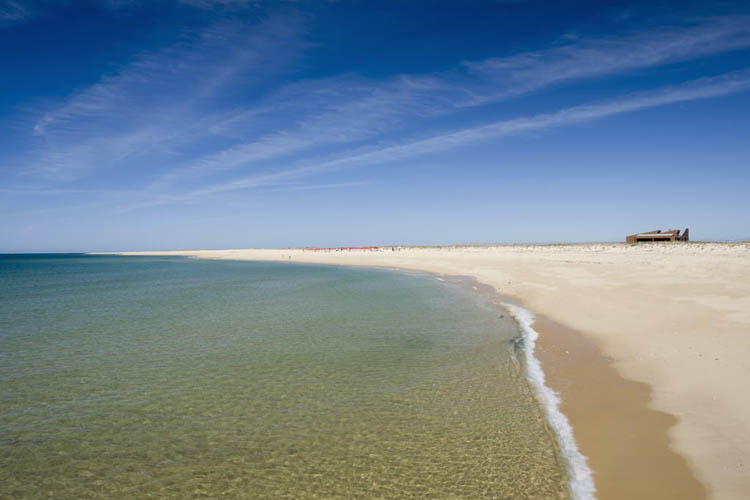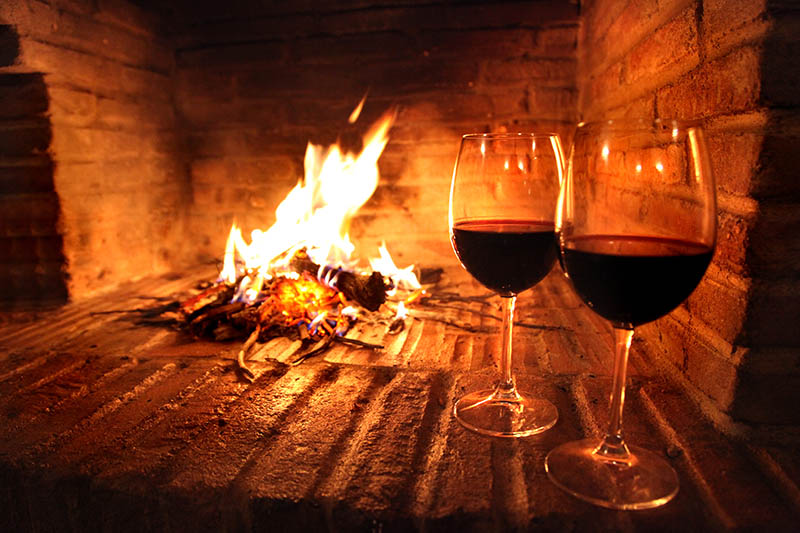Beaches
Put your feet in the sand and feel your body temperature rising. Then close your eyes and let the breeze push you gently towards a cool, refreshing dip in the ocean.
The Algarve is the perfect destination for all of those who enjoy beaches and lots of sun.
Three thousand hours of sunshine, warm water and vast expanses of golden sand… Temperatures ranging on average from 15ºC to 35ºC… Constant sunny days… This is an invitation to look up for a beach all year round.
BARRIL BEACH
This beach is located in the middle of Ilha de Tavira. To get there one must cross a narrow walking bridge that rises over a little water stream coming from the “ria” and then walk to the beach, or take the touristic train that will carry you over a stretch of one kilometre, towards the white sands.
On the way, take a second to look at the fiddler crabs, running away to hide in the mud at your passage, as you get closer to the beach. The dunes exhale a peculiar smell with a hint of curry, originated from a local little plant (Helichrysum italicum aka curry plant).
Right before the sand dunes there is a small settlement that still stands from the old tuna fishing era, now refurbished into a restaurant and bar area one can enjoy the perfect day on the beach with all the commodities at hand.
On the sand dunes lie the big old anchors that would hold the fishing nets to the sea bed, the locals refer to this fantastic anchor alignment as the “Anchor graveyard”.
PRAIA DA TERRA ESTREITA (STA. LUZIA)
East from Barril beach, the island of Tavira narrows to a mere 50 meters wide. It is called “Terra Estreita” beach (narrow land beach) or Sta. Luzia’s beach, for it’s from this picturesque village that you take a boat to cross over to the island.
During the trip you’ll spot “alcatruzes” (clay pots) used to capture octopus, as well as numerous small fishing boats. The beach is quite long, providing quietness and isolation, and you’ll be able to see all the colours from plants scattered around the dunes such as the sea daffodil (Pancratium maritimum).
ISLAND OF TAVIRA
The beach is located in the far East end of the Ilha de Tavira (Tavira’s Island), right in front of Tavira.
The access to the island is made by boat, leaving from “Quatro Águas” peer, in Tavira’s outskirts. As it is a short trip, some just swim across to the island.
The way to the peer is made alongside the Gilão River. You can also admire and a fleet of fishing boats that either sail around or rest on dry docks. Another attraction is the vast areas of salt ponds, very important for the local economy.
This is the one beach of the island with a closer contact with civilization. There is a wide range of touristic facilities (namely bars and restaurants). It is also possible to rent equipments for nautical activities and even to cruise along Ria Formosa.
In the side of the island that faces the river, the water has good quality and the children are very fond of the calm water of the lagoon as well as structures that allow jumps into the water.
CACELA BEACH
In Cacela peninsula, which delimitates Ria Formosa in its east side, lies the beach of Cacela. It is, therefore, possible to reach it by foot via Manta Rota, but it’s better to take the boat, leaving from “Sitio da Fábrica”, in Cacela Velha.
However there is no boarding peer, nor regular boats crossing over. This little hamlet grew around a medieval waterwheel and offers a magnificent view over the ria, next to D. Paio Peres Correia’s fortress.
Across the river, the visitor can find several oyster and clam nurseries, in a thin strip of fine sand that spreads up to the beach of Manta Rota.
The complete quietness of the area invites the contemplation of the rich flora of this sandy barrier, only interrupted in places where the stubborn sea insists on jumping over the natural sand wall or by the numerous birds that seek for food and refuge in the dunes.
DESERT ISLAND
The access is made by sea, starting from “Cais Porta do Sol” peer, in Faro. It’s always worth while crossing the sandy mazes on the low tide of Ria Formosa, where the boats slide through water channels and sand banks.
On the way to the island you can see several bird species such as the graceful flamingo. As you arrive on the beach, take a look around and you won’t be able to spot the end of it.
It’s 10km of complete silence and quietness, both on the sea side and on the river side. This is a completely inhabited area of Ria Formosa.
The untouched dunes allow flora and fauna to thrive, especially birds,that are able to nest here, safe from natural predators. From the boarding dock it is possible to endure on a nature track, using a wooden made walkover.

